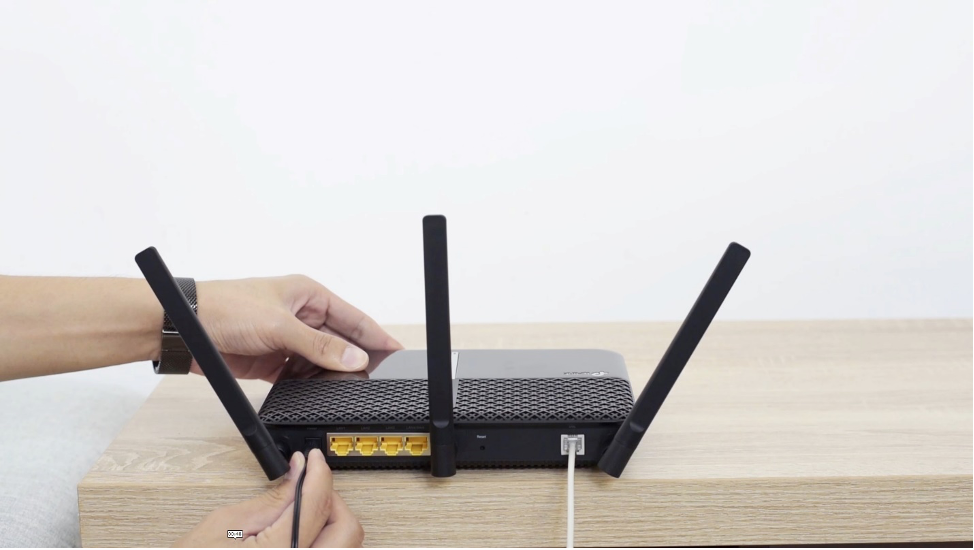5 common Wi-Fi problems (and how to fix them!)

Wi-Fi is an emotive issue, especially when it is not working properly. When Wi-Fi is working as it should it offers an unrivalled level of ease and connectivity. Wi-Fi in 2021 has become almost omnipresent and something you rarely think twice about until you find you are disconnected. Wi-Fi is a huge part of our daily life and is widely used both commercially and in the home. For convenience, Wi-Fi needs to be working flawlessly with no downtime. It is important to identify why your Wi-Fi network is not operating as it should. In this article, we will talk about 5 common Wi-Fi issues, and the multiple ways you can go about fixing them.
Issue #1 – Congested network

Often people will make the assessment, nothing has changed with my network, why isn’t it working as well as it used to? While the credentials of the network may not have changed you the amount of connected devices likely has. The equipment given to you by your service provider are not primarily designed to handle an increasingly busy network. It is like the old 2 lane highway, there was ample space for all road users when it was built in the 60s, now with population density even four lanes each way now is not quite enough to handle the traffic, especially at peak times.
Solution 1 – Connect what you can via ethernet.
If you have ethernet ports throughout your home you can utilise some low-cost network switches to take some of your devices off the wireless network and onto a wired network. This will free up the Wi-Fi network so the performance should improve with fewer devices vying for attention. If you do not have ethernet ports you can use a powerline adapter to simulate an ethernet connection and get similar results.
Solution 2 – Mesh Wi-Fi System
Mesh Wi-Fi systems not only provide one unified Wi-Fi network for your own home, they are purpose-built to handle lots of connected Wi-Fi devices. As we move into the era of every product now coming equipped with Wi-Fi connectivity it is important to have that extra headroom in your network for more devices. The Deco range will handle the busiest of networks and have the bonus of looking great in your home!
Issue #2 – Can’t get Wi-Fi all over the home.
This becomes especially important now with more people working and schooling from home. Usually, it is not practical to have everyone within line of sight of the router, you need space and privacy to complete your tasks. It is also important when it comes time to relax, streaming and gaming are both popular pastimes that can have the fun sucked right out of them the Wi-Fi is not up to scratch.
Solution 1 – Mesh Wi-Fi system
Again, Mesh Wi-Fi will solve these problems, you can strategically place the routers so that every corner of the home is covered in glorious Wi-Fi.
Solution 2 – Powerline Adapters
You can utilise powerline adapters which will provide you a wired network and in some cases a Wi-Fi network in any room of the house. These devices use your existing electrical wiring to send data and turn your homes copper wiring into a high-speed data network.
Issue #3 - Unsecure Wi-Fi Network

In a recent survey by iT website Toms Guide 82% of 2205 people surveyed had not changed their routers administrative password. This makes it quite easy for any hacker to jump on to your network and start mooching your Wi-Fi or worse, monitoring your activity for more malicious purposes.
There are a couple of quick and easy solutions to solve this problem.
Solution 1 – Change your password
This can be done quickly and easily via your router settings, keep in mind when you do this you will need to reconnect all your devices that were previously connected.
Solution 2 – Hide your SSID (Network name)
This is taking Wi-Fi security to the next level, by not broadcasting your SSID people can not see your network, thus they will not look to join this network. This does have some drawbacks, for example, you need to manually type the SSID every time you connect a new device. While this may take some extra time to connect new devices the payoff is the increased security.
Additional information – TP-Link recommends routers that have built-in security like our HomeCare suite to further combat this problem, new firmware should also be updated as it becomes available as new security threats are ever-present.
Issue #4 – Router constantly needs rebooting

This is an annoying scenario that many people face. When the internet becomes slow or unstable many people need to manually switch off the router and power cycle on a regular basis to keep the network at peak performance.
Solution 1 – Replace your router
Modern routers should not have a problem with keeping your network operational. If you are still using an old router given to you by your internet service provider you may find an upgrade will solve this issue and you will also improve your network at the same time.
Solution 2 – If you aren’t ready to invest in a new router yet why not use a smart plug or a timer plug to set up a schedule? You can set up a reboot daily when you are not at home to save a manual reset. The first scenario is by far the preferable of the two, but this may improve your day-to-day internet performance in the short term.
Issue #5 – Slow Wi-Fi

There are 2 main culprits for this. Other users hogging bandwidth and neighbours with their own Wi-Fi networks (especially during peak times). The signal from their routers may be interfering with yours. This can slow down your network as your signal degrades. This can be especially problematic in a scenario like a unit block, as there are more neighbouring networks to contend with due to the high-density living scenario.
Solution 1 – QOS (Quality of service)
If you are not getting the bandwidth you need you can use quality of service to manually set the bandwidth limits on a device level. With this method, you can quickly prioritise your important online activities via the router settings so you aren’t buffering out of the gate.
Solution 2 – Change the channel
Wireless routers can operate on several different channels if you change to a channel with less interference you should see improvements in speed and latency from your Wi-Fi network. You can use a free tool like Network Analyser Lite or Wi-Fi Analyser to help you find the best channel for Wi-Fi in your home.
Solution 3 – Wi-Fi 6
Wi-Fi 6 is the latest standard of Wi-Fi and has many improvements over the previous generation of Wi-Fi (AC, also known as Wi-Fi 5). While it is faster and more efficient a major improvement is its ability to operate efficiently in a congested network environment.